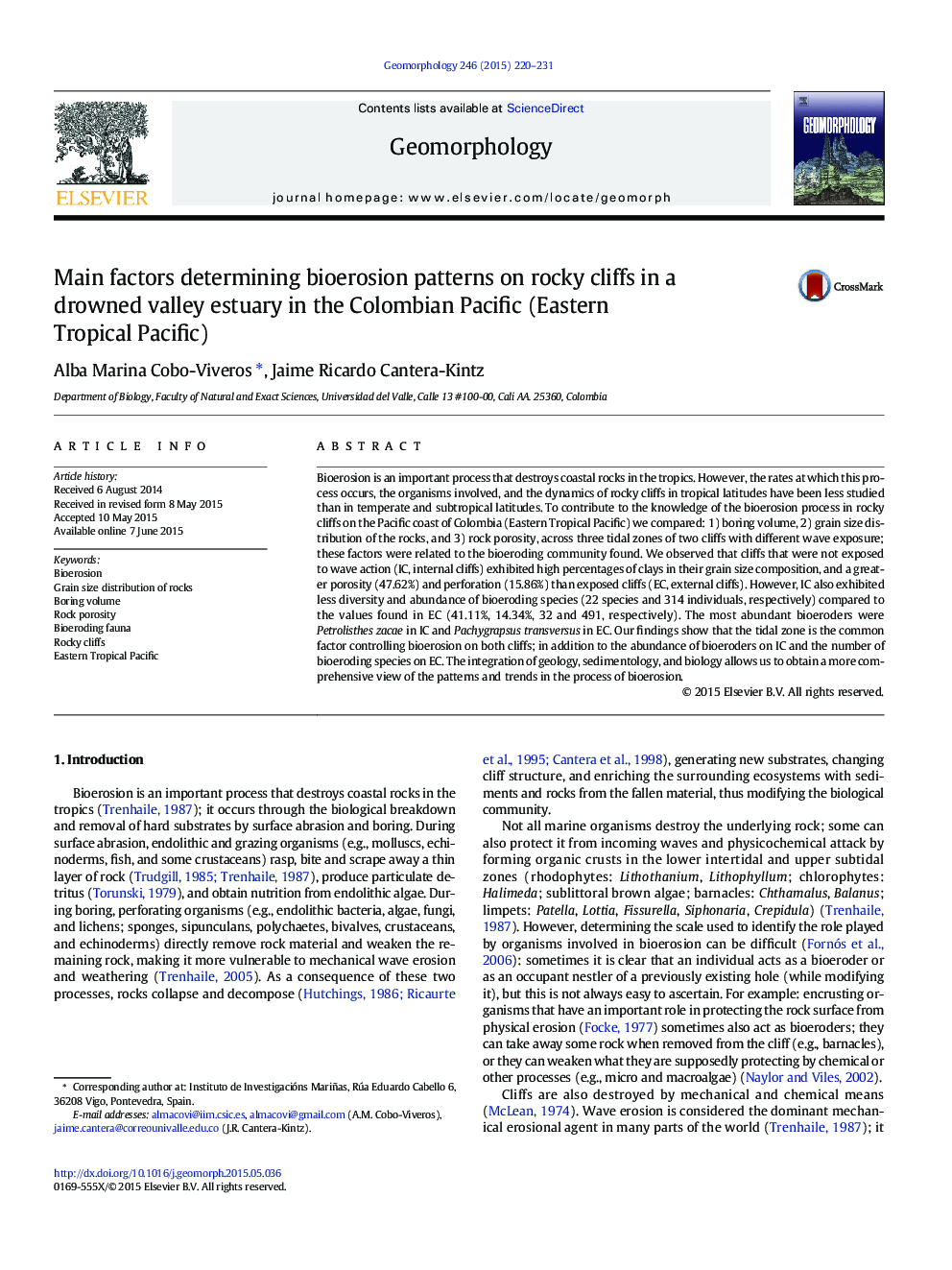| کد مقاله | کد نشریه | سال انتشار | مقاله انگلیسی | نسخه تمام متن |
|---|---|---|---|---|
| 6431934 | 1635403 | 2015 | 12 صفحه PDF | دانلود رایگان |
- We measured perforation volumes on two rocky cliffs in the Colombian Pacific coast.
- Interior cliffs (not exposed to wave action) presented more porosity and perforation volumes.
- Exterior cliffs (exposed to wave action) had higher bioeroder diversity and abundance.
- Lower tidal zones showed higher abundance of bioeroders than the other zones.
- Boring bivalves were less abundant compared to boring crustaceans.
Bioerosion is an important process that destroys coastal rocks in the tropics. However, the rates at which this process occurs, the organisms involved, and the dynamics of rocky cliffs in tropical latitudes have been less studied than in temperate and subtropical latitudes. To contribute to the knowledge of the bioerosion process in rocky cliffs on the Pacific coast of Colombia (Eastern Tropical Pacific) we compared: 1) boring volume, 2) grain size distribution of the rocks, and 3) rock porosity, across three tidal zones of two cliffs with different wave exposure; these factors were related to the bioeroding community found. We observed that cliffs that were not exposed to wave action (IC, internal cliffs) exhibited high percentages of clays in their grain size composition, and a greater porosity (47.62%) and perforation (15.86%) than exposed cliffs (EC, external cliffs). However, IC also exhibited less diversity and abundance of bioeroding species (22 species and 314 individuals, respectively) compared to the values found in EC (41.11%, 14.34%, 32 and 491, respectively). The most abundant bioeroders were Petrolisthes zacae in IC and Pachygrapsus transversus in EC. Our findings show that the tidal zone is the common factor controlling bioerosion on both cliffs; in addition to the abundance of bioeroders on IC and the number of bioeroding species on EC. The integration of geology, sedimentology, and biology allows us to obtain a more comprehensive view of the patterns and trends in the process of bioerosion.
Journal: Geomorphology - Volume 246, 1 October 2015, Pages 220-231
